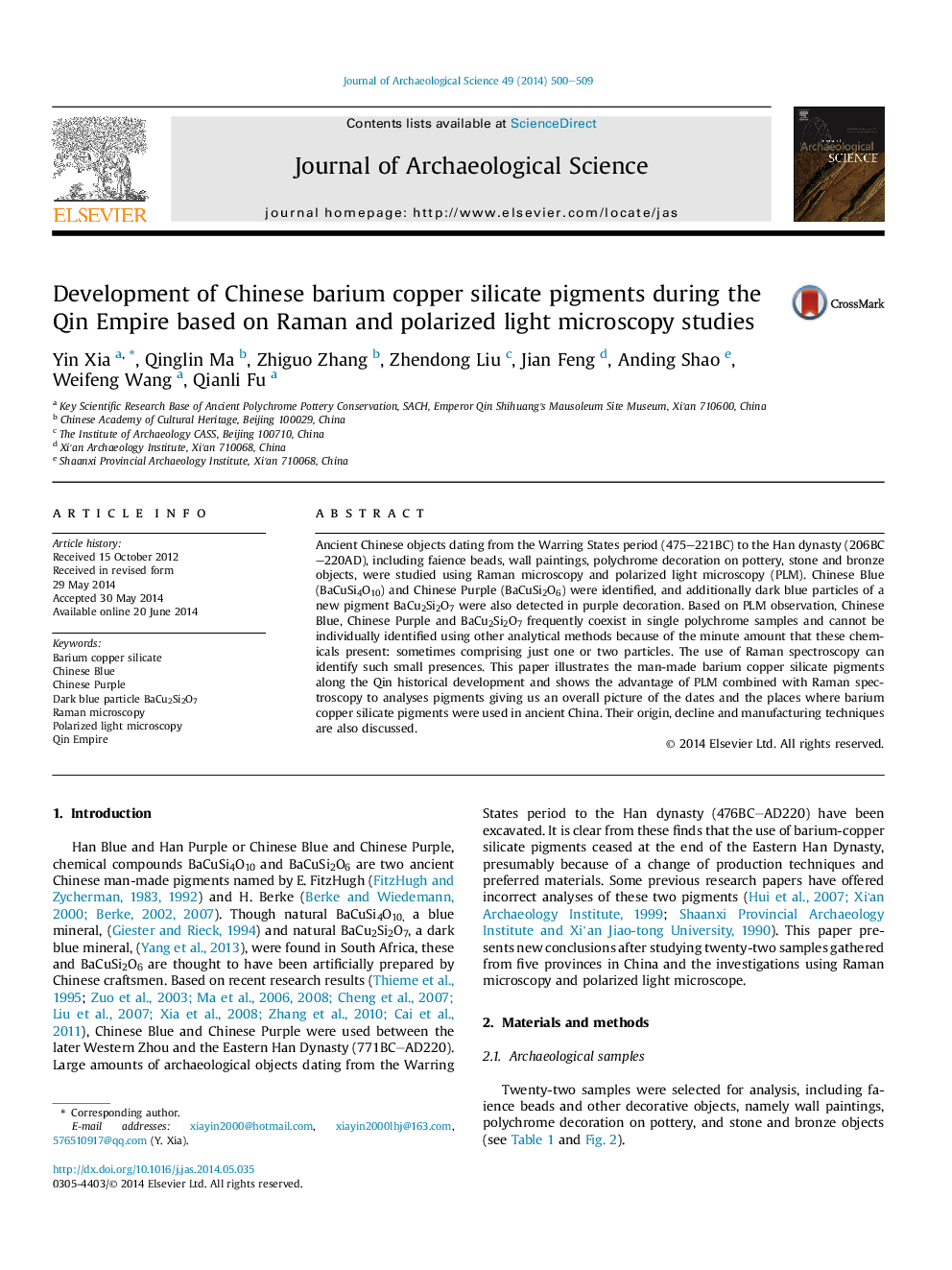| Article ID | Journal | Published Year | Pages | File Type |
|---|---|---|---|---|
| 7443129 | Journal of Archaeological Science | 2014 | 10 Pages |
Abstract
Ancient Chinese objects dating from the Warring States period (475-221BC) to the Han dynasty (206BC-220AD), including faience beads, wall paintings, polychrome decoration on pottery, stone and bronze objects, were studied using Raman microscopy and polarized light microscopy (PLM). Chinese Blue (BaCuSi4O10) and Chinese Purple (BaCuSi2O6) were identified, and additionally dark blue particles of a new pigment BaCu2Si2O7 were also detected in purple decoration. Based on PLM observation, Chinese Blue, Chinese Purple and BaCu2Si2O7 frequently coexist in single polychrome samples and cannot be individually identified using other analytical methods because of the minute amount that these chemicals present: sometimes comprising just one or two particles. The use of Raman spectroscopy can identify such small presences. This paper illustrates the man-made barium copper silicate pigments along the Qin historical development and shows the advantage of PLM combined with Raman spectroscopy to analyses pigments giving us an overall picture of the dates and the places where barium copper silicate pigments were used in ancient China. Their origin, decline and manufacturing techniques are also discussed.
Related Topics
Physical Sciences and Engineering
Materials Science
Materials Science (General)
Authors
Yin Xia, Qinglin Ma, Zhiguo Zhang, Zhendong Liu, Jian Feng, Anding Shao, Weifeng Wang, Qianli Fu,
